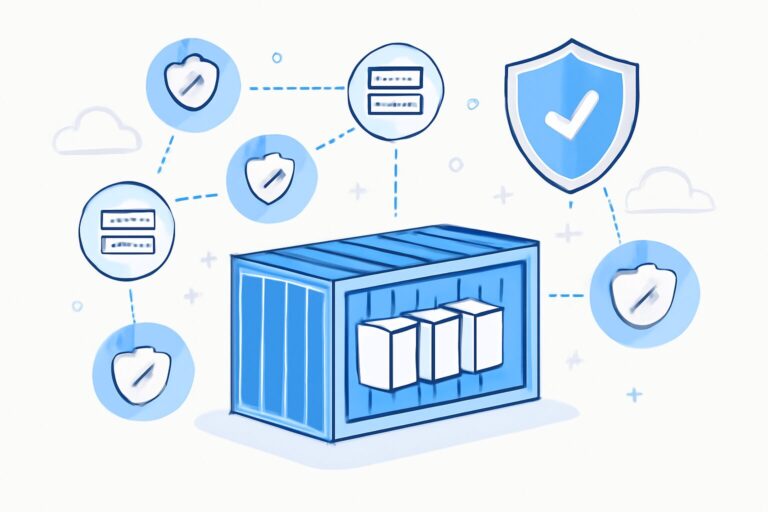# How to Write Effective Data Breach Reports and Use IP Guard to Prevent File Leaks
## Introduction
In today’s data-driven world, one of the biggest challenges enterprises face is how to effectively identify and respond to data breaches. Writing timely and accurate **data breach reports** is a crucial part of security response and helps protect businesses from further losses. This article delves into how to quickly identify data breach risks, standardize the data breach report writing process, and leverage the advanced IP Guard security solution to scientifically prevent file leaks. With professional guidance and practical cases, you will be well-equipped to handle challenges in the complex cybersecurity environment. 🔐
—
## Rapid Detection of Data Breach Incidents and Log Analysis: Using Log Monitoring and Anomaly Indicators for Early Risk Identification
The timeliness of incident detection largely determines the quality of a **data breach report**. Early detection is the first step to prevent escalation of data breaches. How can we achieve rapid detection?
### Importance of Log Monitoring
Security logs in enterprise IT systems serve as “first-hand evidence.” Data such as system logins, file access, network traffic, and abnormal operations are all recorded via logs. With efficient log monitoring tools and platforms (such as Microsoft Sentinel, Splunk), massive amounts of data can be processed and analyzed in real-time.
### Anomaly Indicator Monitoring
Traditional threshold alerts struggle against complex threats. Machine learning and behavioral analytics allow baseline modeling of user behaviors, detecting atypical data access or download activities.
For example, if an employee tries to download a large amount of sensitive files late at night, the system flags this as an “anomaly,” promptly triggering security incident response. Such anomaly detection greatly enhances the timeliness of **data breach reports** and provides decisive evidence for investigations.
### Practical Recommendations
– Configure a comprehensive log collection architecture covering file servers, cloud storage, databases, and endpoints;
– Use SIEM systems combined with IP Guard’s behavioral audit features to build an effective anomaly detection framework;
– Regularly review and optimize alert rules to minimize noise.
Through scientific log analysis and anomaly monitoring, enterprises can achieve early warning of data breach risks, buying valuable time for their security teams.
—
## Standardized Data Breach Report Template and Key Content Elements: Report Structure, Critical Data, and Incident Reproduction
An effective **data breach report** is not just a simple narration of events, but a systematic, professional security document that directly affects risk assessment quality and subsequent handling. Here is a standard template to help you write professional and practical reports.
### Recommended Report Structure
| Section | Description |
|——————-|————————————————————–|
| 1. Incident Overview | Brief description of the event background, including time, scope, and preliminary assessment |
| 2. Detailed Process | Timeline listing event development with focus on key points |
| 3. Data Impact | Enumerate types of leaked data, quantities, involved personnel, and systems |
| 4. Root Cause Analysis| Analyze attack path or internal violations combining logs and audit data |
| 5. Response Measures | Short- and long-term remediation and prevention actions taken and suggested |
| 6. Conclusions and Recommendations | Summarize lessons learned and improvement directions |
| 7. Appendices | Supporting materials such as log excerpts, screenshots, policies |
### Key Content Elements
– **Precise timestamps:** Accurate to the second, with a clear timeline for incident reproduction.
– **Detailed data info:** Types of sensitive data involved, quantity, and presence of personal privacy data.
– **Behavioral trace:** Who did what, whether abnormal, with associated IP addresses and device info.
– **Responsibility attribution:** Internal/external threat or human error?
– **Root cause:** Identification of security gaps or management negligence.
### Practical Writing Tips
Combined with IP Guard’s audit logs, you can precisely present the “cause and effect” of file operations in your report—for example, evidence chain of an employee copying files to a personal device, supported by system alert screenshots, thus underpinning conclusions with data.
### Summary
A standardized and detailed **data breach report** not only bridges internal communication within security teams but also provides a solid basis for enterprise legal compliance and customer trust.
—
## IP Guard Behavioral Audit Features Explained: File Tracking, Operation Records, and Real-Time Alerts
Modern data breach prevention relies heavily on fine-grained behavioral audit technology. As a leading domestic file security solution, IP Guard’s behavioral audit capabilities are particularly powerful.
### File Tracking Technology
IP Guard uses built-in agents and client controls to accurately capture file creation, copying, moving, deletion, printing, and even screenshot activities. Every file operation generates a detailed audit log in the background, including:
– File name and path
– Operation type (read/write/copy)
– Operator identity
– Timestamp
– Device address and network info
These details enable administrators to track the file lifecycle comprehensively, creating closed-loop management.
### Operation Records and Analysis
With big data analytics, IP Guard not only stores logs but also automatically aggregates anomalous access patterns. For instance, repeated access to files outside job scope triggers abnormal behavior assessments.
### Real-Time Alert Mechanism
IP Guard comes with multiple alert rules:
– Threshold breaches on sensitive file access
– Copying files to external storage
– Abnormal file access during non-working hours
Once triggered, alerts notify security personnel immediately to ensure no delay in incident handling.
### Case Sharing
A reputed financial company deployed IP Guard and successfully prevented an employee from illegally distributing sensitive client files via USB drives. Real-time alerts sent to the security center enabled prompt action, averting huge fines.
### Summary
IP Guard’s behavioral audit, with meticulous file tracking and intelligent alerts, builds a strong security barrier enabling efficient and accurate **data breach report** writing.
For more details on IP Guard, please visit the official site: [IP Guard Official Website](https://www.ipguard.cn).
—
## Access Control and Encryption Strategies: Best Practices for Multi-Level Access Management and Data Encryption
Prevention is better than after-the-fact auditing in avoiding data leaks. Access control and encryption form the foundation of data security.
### Multi-Level Access Management
Adopt the Least Privilege Principle combined with Role-Based (RBAC) and Attribute-Based Access Control (ABAC) to allocate permissions on a need-to-know basis.
IP Guard supports finely granular permissions down to folders, files, and operation types, integrating with enterprise AD/LDAP for unified management and dynamic adjustment.
– Critical data accessible only to core roles;
– Remove access promptly for departing employees;
– Frequently audit permissions to prevent privilege creep.
### Data Encryption Technologies
Data should be encrypted both at rest and in transit. Recommendations include:
– At-rest encryption: Files encrypted with AES-256 protecting stored data;
– Transport layer encryption: TLS/SSL protocols for secure network transmission;
– Endpoint encryption: Encrypt stored data on mobile devices to mitigate risks from device loss.
IP Guard supports file encryption with permission bindings, ensuring only authorized users can decrypt, even if files leak, unauthorized access is prevented.
### Case Study
A medical institution using IP Guard’s access and encryption management significantly reduced internal data misuse incidents. Even if doctors copied patient info to personal computers, encryption prevented unauthorized decryption, ensuring privacy and compliance.
### Summary
Access control paired with strong encryption builds multi-layered “firewalls” around data, effectively blocking leak risks and supporting causal analysis in **data breach reports**.
—
## Security Compliance and Risk Assessment: Internal and External Audit Processes to Meet Regulatory Requirements
With laws like the Cybersecurity Law and Data Security Law enforced, security compliance is imperative. **Data breach reports** often serve as important audit materials.
### Regulatory Overview
National requirements for personal information protection and critical data security are tightening. Enterprises must establish continuous risk assessment and compliance monitoring.
### Internal Audit Processes
Key steps include:
1. Regular security inspections to identify permission vulnerabilities;
2. Using IP Guard audit reports to analyze anomalous events and fields;
3. Improving internal controls and technical implementation;
4. Employee training to raise security awareness.
### External Audit Collaboration
Work with third-party security firms for penetration tests and risk assessments, producing objective and professional evaluation reports.
### Risk Assessment Models
Combine quantitative and qualitative methods to evaluate leak severity and likelihood, guiding priority fixes.
### Example
A multinational firm improved its IP Guard and compliance systems to pass GDPR and ISO 27001 audits, benefiting legal risk mitigation and customer trust.
—
## FAQ
**1. What core data should a data breach report include?**
The report should cover incident time, impact scope, types of involved data, operational behavior records, and root cause analyses.
**2. How does IP Guard help prevent file leaks?**
Through behavioral auditing, real-time alerts, and encryption with permission controls, it protects sensitive files across their lifecycle.
**3. How soon should a data breach report be completed after discovery?**
Initial reports are recommended within 24-48 hours following incident confirmation, with ongoing updates.
**4. How to ensure efficient log analysis?**
Leverage SIEM tools combined with IP Guard, big data analytics, and behavior modeling for high detection rates.
**5. How to prevent permission abuse?**
Implement periodic access reviews, least privilege principles, and multi-factor authentication.
**6. Does encryption affect system performance?**
Modern encryption is well-optimized; performance impact is minimal compared to the security benefits.
—
Imperial Link Technology is dedicated to providing professional data security solutions, employing advanced technologies and strict management processes to help build an unbreachable information defense system. For more details on IP Guard and enterprise data security services, visit [https://www.de-line.net](https://www.de-line.net). Let us safeguard your digital security! 🔒✨
************
The above content is provided by our AI automation poster




